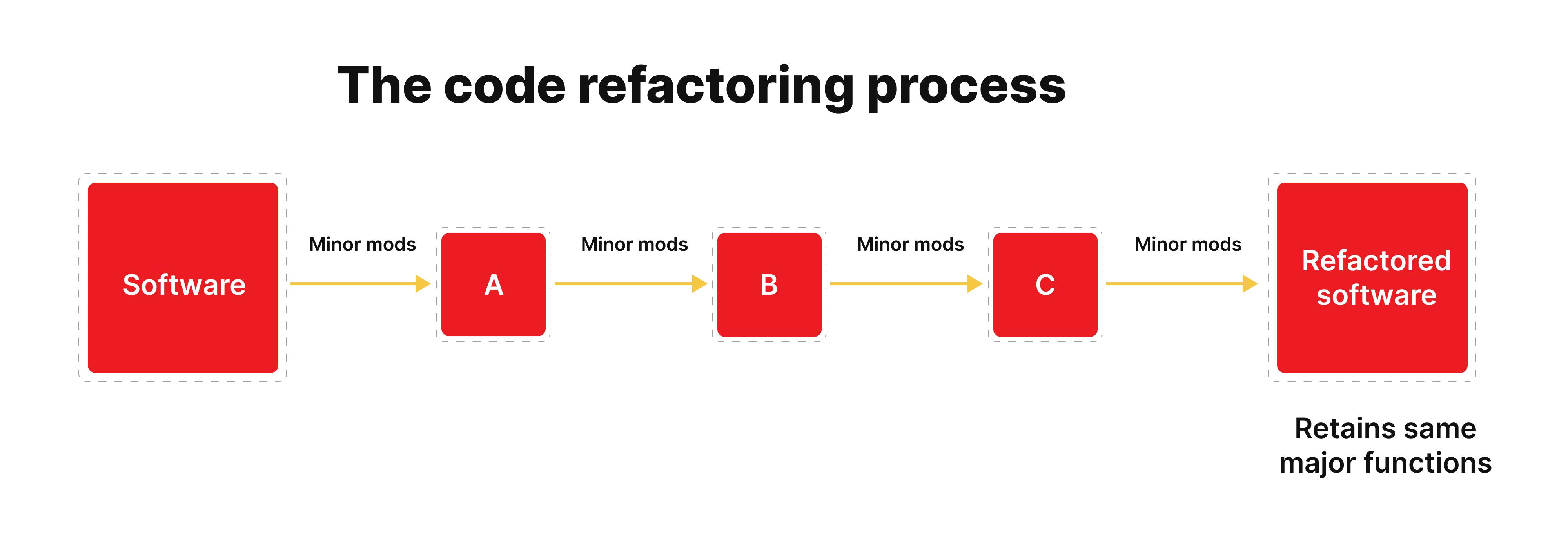Refactoring Techniques: Improving Existing Code
Refactoring techniques are a set of practices and procedures used to restructure existing code without changing its external behavior. By applying refactoring techniques, developers can improve the code’s readability, maintainability, and flexibility, making it easier to understand, modify, and extend.

Some Common Refactoring Techniques:

-
Extract Method: Breaks down a complex method into smaller, more manageable ones, making the code more modular and easier to understand.
-
Inline Method: In contrast to extracting a method, this technique moves a small method that is being called only once into the caller, reducing the complexity of both the caller and the called method.
-
Rename Method/Variable: Changes the name of a method or variable to make it more descriptive and easier to understand, improving the readability of the code.
-
Move Method/Variable: Relocates a method or variable to a more appropriate class or module, enhancing the code’s modularity and organization.
-
Introduce Explaining Variable: Adds a new variable to store an intermediate result or computation, making the code more expressive and understandable.
-
Replace Temp with Query: Substitutes a temporary variable with a query or method call, reducing the complexity and increasing the reusability of the code.
-
Consolidate Duplicate Conditional Fragments: Combines similar or duplicate conditional statements into a single one, enhancing the code’s efficiency and maintainability.
-
Introduce Parameter Object: Groups multiple related parameters into a single object, improving the code’s encapsulation and reducing the number of parameters.
-
Replace Conditional with Polymorphism: Replaces conditional statements with polymorphic behaviour, making the code more flexible and extendable.
-
Decompose Conditional: Breaks a complex conditional statement into smaller, more modular ones, making it easier to understand and modify.
Benefits of Refactoring:
- Improved Readability: Simplifies the code by breaking down complex structures and using more descriptive names.
- Enhanced Maintainability: Makes it easier to extend or modify the code due to its better organization and modularity.
- Reduced Complexity: Divides large methods into smaller ones and removes duplicate code, resulting in more manageable and comprehensible code.
- Increased Flexibility: Improves the code’s adaptability to changing requirements by making it easier to add new features or modify existing ones.
- Improved Unit Testing: Simplification of the code makes it more straightforward to write effective unit tests, ensuring the reliability of the system.

Very good refactoring techniques, using it i’m improving my coding skills and also my code is becoming better and better
Is not bad, but try to make it more understandable for a beginner
This is a good start, but there are some other techniques that you could include, such as renaming variables and methods
I disagree with some of the techniques that you have mentioned, such as using long variable names
These techniques are so obvious, I can’t believe I didn’t think of them myself
I love how you have used code examples to illustrate the techniques
This is a great article, but it would be even better if you could provide some examples of how to apply these techniques in real-world projects
I’m not sure if I agree with all of the techniques that you have mentioned, but I think that this is a good starting point for anyone who wants to learn more about refactoring
These techniques are great, but they can be time-consuming to implement
I’m glad that you have included a section on refactoring legacy code
This is a great article, but it would be even better if you could provide some examples of how to use these techniques in different programming languages
I’m not sure if I agree with all of the techniques that you have mentioned, but I think that this is a good starting point for anyone who wants to learn more about refactoring
These techniques are great, but they can be time-consuming to implement
I’m glad that you have included a section on refactoring legacy code
This is a great article, but it would be even better if you could provide some examples of how to use these techniques in different programming languages